 The National Severe Storms Laboratory‘s 10cm Doppler weather radar begins full-time experimental operation in Norman, Oklahoma, just in time for the region’s active severe weather season. A surplus Air Force radar left over from the Distant Early Warning radar network (also known as the DEW Line) is installed and housed in a facility that’s also made of military surplus parts. There is no real-time display at first: researchers and meteorologists store the Doppler radar’s observations on computer tape that has to be processed and printed months after the fact, and compared to archived records from the existing WSR-57 radar at Norman.
The National Severe Storms Laboratory‘s 10cm Doppler weather radar begins full-time experimental operation in Norman, Oklahoma, just in time for the region’s active severe weather season. A surplus Air Force radar left over from the Distant Early Warning radar network (also known as the DEW Line) is installed and housed in a facility that’s also made of military surplus parts. There is no real-time display at first: researchers and meteorologists store the Doppler radar’s observations on computer tape that has to be processed and printed months after the fact, and compared to archived records from the existing WSR-57 radar at Norman.

 The National Weather Service’s NOAA Weather Radio system finally finds its purpose with the introduction of a piercing “warning tone” preceding emergency weather announcements such as severe weather warnings. Manufacturers of weather radio receivers (an item which hit the market in
The National Weather Service’s NOAA Weather Radio system finally finds its purpose with the introduction of a piercing “warning tone” preceding emergency weather announcements such as severe weather warnings. Manufacturers of weather radio receivers (an item which hit the market in  Dr. Tetsuya Theodore Fujita, a pioneering researcher in the formation and development of severe weather, proposes a scale for judging the intensity of tornadoes by the damage left behind. His five-point scale covers minimal tornadoes (F1) through storms capable of inflicting incredible damage (F5), with damage surveyed after a storm to determine the physical effects and the estimated wind speed needed to cause those effects. The Fujita Scale is adopted almost worldwide, remaining in widespread use by severe weather researchers and government agencies until it is supplanted by the more refined Enhanced Fujita Scale in the 1990s.
Dr. Tetsuya Theodore Fujita, a pioneering researcher in the formation and development of severe weather, proposes a scale for judging the intensity of tornadoes by the damage left behind. His five-point scale covers minimal tornadoes (F1) through storms capable of inflicting incredible damage (F5), with damage surveyed after a storm to determine the physical effects and the estimated wind speed needed to cause those effects. The Fujita Scale is adopted almost worldwide, remaining in widespread use by severe weather researchers and government agencies until it is supplanted by the more refined Enhanced Fujita Scale in the 1990s. Students and seasoned weather researchers at the National Severe Storms Laboratory in Norman, Oklahoma embark on the Tornado Intercept Project (TIP), a concerted effort to gather film footage of developing or active tornadoes in an effort to study wind and debris patterns. Though believed by some to be of limited scientific value, TIP is the beginning of “storm chasing” and yields major breakthroughs in scientific understanding of the formation of tornadoes just one year later.
Students and seasoned weather researchers at the National Severe Storms Laboratory in Norman, Oklahoma embark on the Tornado Intercept Project (TIP), a concerted effort to gather film footage of developing or active tornadoes in an effort to study wind and debris patterns. Though believed by some to be of limited scientific value, TIP is the beginning of “storm chasing” and yields major breakthroughs in scientific understanding of the formation of tornadoes just one year later. Originally named ERTS-1 (Earth Resource Technology Satellite), NASA’s Landsat satellite, based on the Nimbus weather satellites, is launched to begin constant observations of Earth’s land, air and oceans. Landsat 1’s tour of duty lasts just under six years, during which it discovers a previously unknown island – never before spotted from land or sea – off the northeastern Canadian coast. Landsat 1 remains in service through
Originally named ERTS-1 (Earth Resource Technology Satellite), NASA’s Landsat satellite, based on the Nimbus weather satellites, is launched to begin constant observations of Earth’s land, air and oceans. Landsat 1’s tour of duty lasts just under six years, during which it discovers a previously unknown island – never before spotted from land or sea – off the northeastern Canadian coast. Landsat 1 remains in service through  In the broad daylight of mid-afternoon, an asteroid measuring somewhere between 10 and 50 feet in diameter plows through Earth’s atmosphere over North America, creating a long-tailed fireball across the sky. Undetected before its close pass – only 35 miles from Earth’s surface – asteroid US19720810 skips off of the atmosphere and back into space, having lost half of its mass to the frictional heating of plummeting through the atmosphere. The spectacle lasts only a couple of minutes, and US19720810 will make another pass by the Earth in
In the broad daylight of mid-afternoon, an asteroid measuring somewhere between 10 and 50 feet in diameter plows through Earth’s atmosphere over North America, creating a long-tailed fireball across the sky. Undetected before its close pass – only 35 miles from Earth’s surface – asteroid US19720810 skips off of the atmosphere and back into space, having lost half of its mass to the frictional heating of plummeting through the atmosphere. The spectacle lasts only a couple of minutes, and US19720810 will make another pass by the Earth in 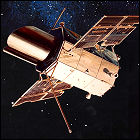 NASA launches the third and final Orbiting Astronomical Observatory satellite, given the nickname “Copernicus” when it successfully enters service near the 500th anniversary of the birth of the famed astronomer of the same name. OAO-3 is a joint venture between NASA and universities in the U.S. and the U.K., again focusing largely on ultraviolet observation of the sky, and it is instrumental in the discovery and study of long-period pulsars. OAO-3 will remain in service through February 1981, its successful nine-year mission lending weight to the ongoing construction and planning of NASA’s Space Telescope project, later to be known as the Hubble Space Telescope.
NASA launches the third and final Orbiting Astronomical Observatory satellite, given the nickname “Copernicus” when it successfully enters service near the 500th anniversary of the birth of the famed astronomer of the same name. OAO-3 is a joint venture between NASA and universities in the U.S. and the U.K., again focusing largely on ultraviolet observation of the sky, and it is instrumental in the discovery and study of long-period pulsars. OAO-3 will remain in service through February 1981, its successful nine-year mission lending weight to the ongoing construction and planning of NASA’s Space Telescope project, later to be known as the Hubble Space Telescope. NASA and the National Oceanic & Atmospheric Administration launch NOAA-2, a weather satellite intended to operate in a near-polar low Earth orbit. NOAA-2 is based on the already-flown ITOS satellite design, and will function in orbit through October
NASA and the National Oceanic & Atmospheric Administration launch NOAA-2, a weather satellite intended to operate in a near-polar low Earth orbit. NOAA-2 is based on the already-flown ITOS satellite design, and will function in orbit through October  NASA launches Explorer 48, renamed Small Astronomy Satellite B, from an Italian-owned offshore launch platform off the coast of Kenya. SAS-B is a smaller spacecraft than NASA’s larger Orbiting Astronomical Observatory (OAO) series, but can be aimed very precisely at any gamma ray sources that it detects. One of those sources turns out to be the pulsar remnant of a massive supernova, a discovery later named Geminga. An electrical fault will end SAS-B’s functionality in
NASA launches Explorer 48, renamed Small Astronomy Satellite B, from an Italian-owned offshore launch platform off the coast of Kenya. SAS-B is a smaller spacecraft than NASA’s larger Orbiting Astronomical Observatory (OAO) series, but can be aimed very precisely at any gamma ray sources that it detects. One of those sources turns out to be the pulsar remnant of a massive supernova, a discovery later named Geminga. An electrical fault will end SAS-B’s functionality in 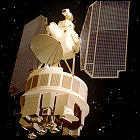 NASA launches the Nimbus 5 satellite, designed to observe weather patterns from orbit and test new weather and climate detection technologies. Launched into a polar orbit from Vandenberg Air Force Base in California, Nimbus 5 includes newly-developed experiments to examine Earth in the microwave and infrared portions of the spectrum.
NASA launches the Nimbus 5 satellite, designed to observe weather patterns from orbit and test new weather and climate detection technologies. Launched into a polar orbit from Vandenberg Air Force Base in California, Nimbus 5 includes newly-developed experiments to examine Earth in the microwave and infrared portions of the spectrum. The National Severe Storms Laboratory in Norman, Oklahoma dispatches “storm chasers” to track, follow, and observe the behavior of storms in a predicted tornado outbreak. The chasers manage to document the complete development of a tornado in Union City, Oklahoma on film and on an experimental Doppler radar system; for the first time, large-scale cloud rotation at high altitude is observed on radar prior to the appearance of a funnel cloud, a key discovery in tornado prediction. This phenomenon, called the Tornadic Vortex Signature, is a precursor to virtually every radar-detected tornado.
The National Severe Storms Laboratory in Norman, Oklahoma dispatches “storm chasers” to track, follow, and observe the behavior of storms in a predicted tornado outbreak. The chasers manage to document the complete development of a tornado in Union City, Oklahoma on film and on an experimental Doppler radar system; for the first time, large-scale cloud rotation at high altitude is observed on radar prior to the appearance of a funnel cloud, a key discovery in tornado prediction. This phenomenon, called the Tornadic Vortex Signature, is a precursor to virtually every radar-detected tornado.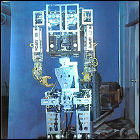 At Tokyo’s Waseda University, robotics pioneer Professor Ichiro Kato and his team unveil the first full-size humanoid robot, WABOT-1. Capable of hearing and responding in speech, grasping objects, using artificial eyes to measure distances to objects, and rudimentary walking movement, WABOT-1 is the culmination of designs laid out as early as
At Tokyo’s Waseda University, robotics pioneer Professor Ichiro Kato and his team unveil the first full-size humanoid robot, WABOT-1. Capable of hearing and responding in speech, grasping objects, using artificial eyes to measure distances to objects, and rudimentary walking movement, WABOT-1 is the culmination of designs laid out as early as  Astronomer Charles Kowal discovers Leda, a tiny, previously undiscovered moon of Jupiter, using Mount Palomar Observatory’s telescope. With a radius of less than seven miles and an inclined orbit, Leda is the first Jovian moon discovered in over two decades, and is among the last to be discovered using ground-based telescopes in the 20th century.
Astronomer Charles Kowal discovers Leda, a tiny, previously undiscovered moon of Jupiter, using Mount Palomar Observatory’s telescope. With a radius of less than seven miles and an inclined orbit, Leda is the first Jovian moon discovered in over two decades, and is among the last to be discovered using ground-based telescopes in the 20th century. The first transmission from Earth designed to be a message for interstellar listeners is broadcast from the newly-refurbished Arecibo Radio Telescope in Puerto Rico. Weighing in at 210 bytes, the message is a binary transmission that, when properly assembled, provides a graphical representation of Earth’s solar system, a human being, the makeup of human DNA and the elements from which it is constructed, and the population of Earth. Though the Arecibo dish is pointed in the direction of the M13 globular cluster at the time of the message’s transmission, that cluster will have moved in the 25,000 years it takes for the message to reach that location (and, in any case, Earth and its entire solar system will have moved in the 25,000 additional years it would take to receive a reply), so the message is more of an interstellar technology demo than a message in a bottle.
The first transmission from Earth designed to be a message for interstellar listeners is broadcast from the newly-refurbished Arecibo Radio Telescope in Puerto Rico. Weighing in at 210 bytes, the message is a binary transmission that, when properly assembled, provides a graphical representation of Earth’s solar system, a human being, the makeup of human DNA and the elements from which it is constructed, and the population of Earth. Though the Arecibo dish is pointed in the direction of the M13 globular cluster at the time of the message’s transmission, that cluster will have moved in the 25,000 years it takes for the message to reach that location (and, in any case, Earth and its entire solar system will have moved in the 25,000 additional years it would take to receive a reply), so the message is more of an interstellar technology demo than a message in a bottle.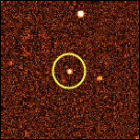 Astronomers catch fleeting glimpses of a new natural satellite of Jupiter, Themisto, though the initial estimates of its orbit are “off” enough that Themisto becomes “lost” and isn’t observed again until 2000. With a diameter of roughly five miles, Themisto marks the dividing line between the larger inner moons of Jupiter and the widely-scattered menagerie of asteroid-like outer moons orbiting the planet. Astronomers Elizabeth Roemer and Charles Kowal (who discovered another new Jovian moon in 1974) share credit for discovering the moon. Themisto is the last Jovian satellite to be discovered by ground-based telescope in the 20th century.
Astronomers catch fleeting glimpses of a new natural satellite of Jupiter, Themisto, though the initial estimates of its orbit are “off” enough that Themisto becomes “lost” and isn’t observed again until 2000. With a diameter of roughly five miles, Themisto marks the dividing line between the larger inner moons of Jupiter and the widely-scattered menagerie of asteroid-like outer moons orbiting the planet. Astronomers Elizabeth Roemer and Charles Kowal (who discovered another new Jovian moon in 1974) share credit for discovering the moon. Themisto is the last Jovian satellite to be discovered by ground-based telescope in the 20th century.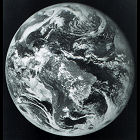 The first in a new generation of weather satellites operating in geosynchronous orbit for the National Oceanic & Atmospheric Administration, GOES-1, is launched from Cape Canaveral. An acronym for Geostationary Operational Environmental Satellite, GOES-1 is positioned over the Indian Ocean, where it is expected to become but the first in a constellation of weather satellites monitoring Earth’s atmosphere in both visible and infrared light. In
The first in a new generation of weather satellites operating in geosynchronous orbit for the National Oceanic & Atmospheric Administration, GOES-1, is launched from Cape Canaveral. An acronym for Geostationary Operational Environmental Satellite, GOES-1 is positioned over the Indian Ocean, where it is expected to become but the first in a constellation of weather satellites monitoring Earth’s atmosphere in both visible and infrared light. In 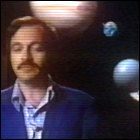 The premiere installment of the five-minute astronomy series Jack Horkheimer: Star Hustler marks the beginning of the show’s four-decade run on PBS. Hosted by Jack Horkheimer, director of the Miami Space Transit Planetarium, the show initially airs only on Florida’s PBS channel, and will not enter national syndication to other PBS outlets until 1985. It is often the last thing to air before sign-off, as Horkheimer encourages viewers to step outside and stargaze after the show is over. Horkheimer will host the series until his death in 2010.
The premiere installment of the five-minute astronomy series Jack Horkheimer: Star Hustler marks the beginning of the show’s four-decade run on PBS. Hosted by Jack Horkheimer, director of the Miami Space Transit Planetarium, the show initially airs only on Florida’s PBS channel, and will not enter national syndication to other PBS outlets until 1985. It is often the last thing to air before sign-off, as Horkheimer encourages viewers to step outside and stargaze after the show is over. Horkheimer will host the series until his death in 2010. A team of MIT astronomers, flying in a plane modified to serve as an airborne high-altitude telescope, plans to observe the planet Uranus as it eclipses, or “occults”, a star. But the team observes more occultations than expected both before and after the planet itself passes in front of the star. The inevitable conclusion is that Uranus has rings, made of material too dark to be detected by existing Earthbound telescopes. Further observations are given top priority: NASA’s Voyager 2 space probe, due to lift off later in 1977, may last long enough to reach Uranus, and the newly discovered rings must be taken into account when planning its flyby trajectory.
A team of MIT astronomers, flying in a plane modified to serve as an airborne high-altitude telescope, plans to observe the planet Uranus as it eclipses, or “occults”, a star. But the team observes more occultations than expected both before and after the planet itself passes in front of the star. The inevitable conclusion is that Uranus has rings, made of material too dark to be detected by existing Earthbound telescopes. Further observations are given top priority: NASA’s Voyager 2 space probe, due to lift off later in 1977, may last long enough to reach Uranus, and the newly discovered rings must be taken into account when planning its flyby trajectory. The second in a new generation of geosynchronous weather satellites is launched for the National Oceanic & Atmospheric Administration, GOES-2. An acronym for Geostationary Operational Environmental Satellite, GOES-2 is initially positioned at a point over 60 degrees west longitude on Earth, though it will be repositioned several times in its career as a weather satellite. In 1993, it will cease weather monitoring operations and will act chiefly as a communications satellite serving islands in the Pacific Ocean, as well as manned research facilities in Antarctica. GOES-2 will serve that function through 2001.
The second in a new generation of geosynchronous weather satellites is launched for the National Oceanic & Atmospheric Administration, GOES-2. An acronym for Geostationary Operational Environmental Satellite, GOES-2 is initially positioned at a point over 60 degrees west longitude on Earth, though it will be repositioned several times in its career as a weather satellite. In 1993, it will cease weather monitoring operations and will act chiefly as a communications satellite serving islands in the Pacific Ocean, as well as manned research facilities in Antarctica. GOES-2 will serve that function through 2001. NASA launches the first High Energy Astronomy Observatory satellite in Earth orbit, continuing the survey of the sky with sensitive detectors designed to find gamma ray and X-ray sources. HEAO-1 will remain in service through January 1979, and will re-enter Earth’s atmosphere in March 1979.
NASA launches the first High Energy Astronomy Observatory satellite in Earth orbit, continuing the survey of the sky with sensitive detectors designed to find gamma ray and X-ray sources. HEAO-1 will remain in service through January 1979, and will re-enter Earth’s atmosphere in March 1979. Radio astronomers at Ohio State University observe a signal from the direction of the constellation Sagittarius that seems to jump out from the usual cosmic background noise. The 72-second signal is quickly dubbed the “Wow Signal” (thanks to a hastily scribbled note), and is considered by some to be a strong candidate for a message from an extraterrestrial civilization since its frequency falls almost exactly on the hydrogen line of the electromagnetic spectrum, a wavelength closely watched by the SETI program. But more powerful telescopes listening in on the same region of space in the years and decades to come pick up no further signals. Scientists involved in the initial analysis later admit that the “message” may be of Earthly origin, reflected back from an object in space.
Radio astronomers at Ohio State University observe a signal from the direction of the constellation Sagittarius that seems to jump out from the usual cosmic background noise. The 72-second signal is quickly dubbed the “Wow Signal” (thanks to a hastily scribbled note), and is considered by some to be a strong candidate for a message from an extraterrestrial civilization since its frequency falls almost exactly on the hydrogen line of the electromagnetic spectrum, a wavelength closely watched by the SETI program. But more powerful telescopes listening in on the same region of space in the years and decades to come pick up no further signals. Scientists involved in the initial analysis later admit that the “message” may be of Earthly origin, reflected back from an object in space. British glaciologist John H. Mercer publishes a
British glaciologist John H. Mercer publishes a 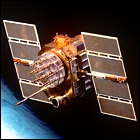 The U.S. Air Force launches NAVSTAR-1, the first of a planned constellation of experimental satellites supporting the Department of Defense’s Global Positioning System project. Envisioned as a network of satellites providing extremely accurate location data for military purposes, the Global Positioning System will later grow to service civilian customers as well. Three other NAVSTAR satellites are launched in 1978 alone, and later satellites in the original NAVSTAR series will be launched betwen 1980 and 1985. Unlike the later, more advanced NAVSTAR II satellites of the 1990s, data from the original NAVSTAR constellation is restricted to the American military.
The U.S. Air Force launches NAVSTAR-1, the first of a planned constellation of experimental satellites supporting the Department of Defense’s Global Positioning System project. Envisioned as a network of satellites providing extremely accurate location data for military purposes, the Global Positioning System will later grow to service civilian customers as well. Three other NAVSTAR satellites are launched in 1978 alone, and later satellites in the original NAVSTAR series will be launched betwen 1980 and 1985. Unlike the later, more advanced NAVSTAR II satellites of the 1990s, data from the original NAVSTAR constellation is restricted to the American military.